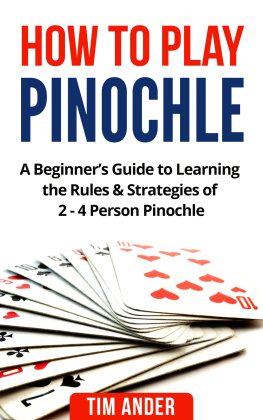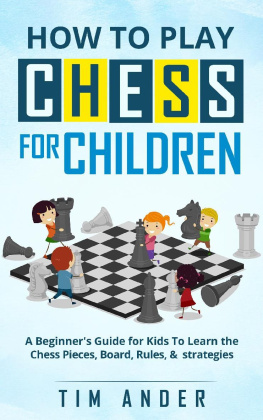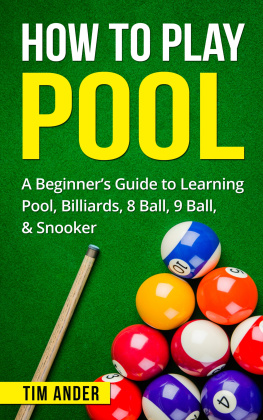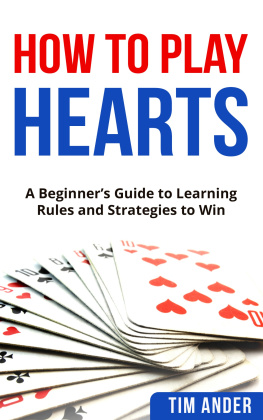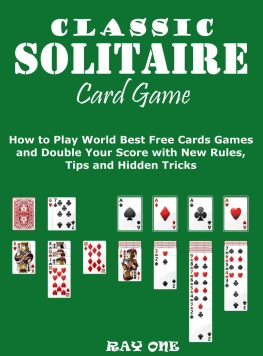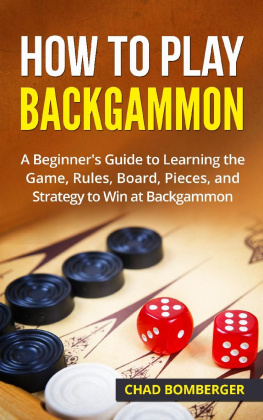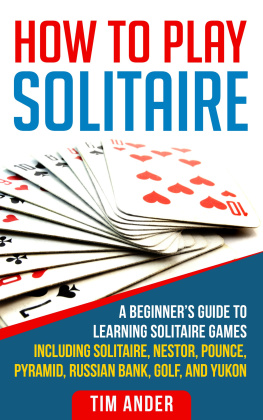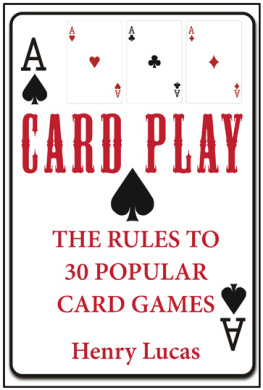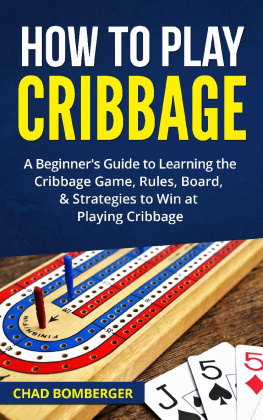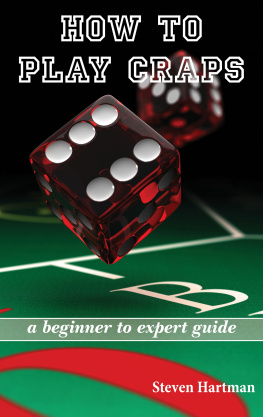How to Play Pinochle
A Beginners Guide to Learning the Rules & Strategies of 2 - 4 Person Pinochle
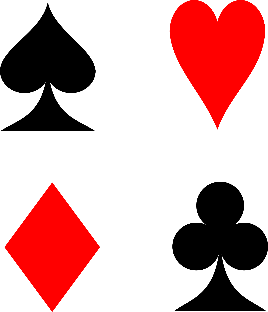
TIM ANDER
Copyright 2018 by Tim Ander.
All rights reserved.
No part of this publication may be reproduced, distributed, or transmitted in any form or by any means, including photocopying, recording, or other electronic or mechanical methods, without the prior written permission of the publisher, except in the case of brief quotations embodied in critical reviews and certain other noncommercial uses permitted by copyright law.
For permission requests, please write to the publisher.
Table of Contents
Introduction
What is Pinochle?
Pinochle is a card game which is played with a 48 card deck. Traditionally the game of Pinochle is played with two or four players, but there are variations for three players, as well as six and eight.
Pinochle is a trick-taking card game and is derived from the game of Bezique, a game originating in 19th century France. The game involves players taking tricks to win points and also gaining points by forming certain combinations of cards, which are called melds. The game falls into the trick-and-meld category due to the gameplay mechanics.
The standard version of Pinochle involves players creating partnerships to take tricks and create melds. The play is broken down into three main phases. The first phase involves bidding, the second involves the melds and the third deals with the tricks. When the three phases have been played out, the score is tallied.
The game of Pinochle has a few ways to determine the winner. The two most common methods are a number of games won and total score. Each deal can constitute a game, with the player, or players, with the highest score, taking the game. Whoever wins the most games is the winner. Players more often play to a total score. For example, you may decide to play to 1000. The first player, or players, to reach 1000 points are the winners of the match.
History
We have already mentioned that the game of Pinochle comes from the bench game of Bezique. When the game was created, it was done so under the name Binocle, which in the French language is translated as eyeglasses, not that that had anything to do with the actual game. In the French language, the word binage is the word for the combination of cards known as binocle. The exact origin of the word is not clearly known, but the transition from Binocle to Pinochle is.
It was German immigrants who brought the popular card game to America and with the accent, the game was mispronounced as Pinocle, and later spelled as Pinochle. The game rose in popularity and in the 1940s, this became a double-edged sword. In some parts of the US, the game was outlawed due to the First World War. The thinking was that the game was too German and to boycott it was anti-German and Pro-American.
Thankfully, for many of us, the game was not outlawed for long, and the game is played by many players around the world today.
How to Play
The Basics
It is the Pinochle deck which differs from many other card games. There are 48 cards in the deck, consisting of four suits and six ranks. The deck consists of nines, tens, jacks, queens, kings, and aces. There are eight of each rank, two copies in each suit. This means that there are two 9-of-spades, two 9-of-hearts, two 9-of-diamonds, two 9-of-clubs, and so on for each rank, giving 48 cards in total.
The ranks are ordered slightly differently from the usual method. The 9 is still the lowest, and the ace is still the highest, but the order between these is not what you would usually expect. The ordering of the cards from high to low is A, 10, K, Q, J, 9. Not the usual order of cards, but this is the order for Pinochle.
This deck can be assembled by combining two regular decks, or two decks containing these cards, with the remainder, or unused cards, set to the side. You can also use a standard deck and change the scoring, but we are not going to get into that in this book. Pinochle decks are widely available, if you do not have access to two separate decks, or want to buy two separate decks. A Pinochle deck is also neater and easier to manage than trying to combine two decks into one.
For games where more players are involved, e.g., six player or eight player games, two Pinochle decks can be combined to play the game. You can also use this double deck for a four-player game, with the scoring changed, but that is also something out with the scope of this book.
So what else do you need to play? Some friends would be the most important thing to have. You can, of course, play with people who are not your friends, but playing with friends will be more socially satisfying. You also need to have a table, or any other playing surface, to play the game on. You will need a big enough space to be able to deal cards to each player and have some space in the middle for the phases. Drinks and snacks are not mandatory, but I find that the evening is significantly improved with them. Now we have the ingredients, let us look at how we mix them all together.
The Partners
Before you begin to play, you should decide on how you are going to partner up. You may want to have the same partner all the time, if you are one couple playing against another, or you may decide to mix couple up during the evening. It does not matter how you do it; it will still be fun.
You could also decide to mix partners and for each individual player to keep their own score, this way there will be one winner at the end of the night. Once you have decided on partners, you should sit at the table, opposite your partner. You are ready to begin.
The Deal
For the purpose of the game rules, we will describe how to play with four players. In later chapters, we will describe how you can play the game with two and three players. To deal the cards, you first need to decide who the dealer is. You can do this by nominating someone or cutting the cards. You can use any method you wish; there is no real need to spend more time here than necessary.
The dealer should shuffle the cards and then pass them to the player on their left. The player on the left can choose to cut the cards or leave them as they are, before passing them back to the dealer. In four-person Pinochle, all of the cards are dealt out. Dealing is done in a clockwise direction starting with the player to the left of the dealer.
You can deal in the traditional method; dealing one card to each player at a time, or you can deal the cards in groups. Starting with the person to your left you would deal them three or four cards in one go and then do the same with all the other players. Once you have dealt three or four to each player, you would do the same again, making sure to stay with the same number, until all the cards have been dealt. If you start by dealing three cards to each player, then you should continue to deal three cards to each player as you go around the group.
Once you have dealt out all of the cards, you are ready to play. The person to the left of the dealer will become the dealer on the next hand.
Phase 1: Auction
A lot of cards games involve some sort of auction or bidding process and Pinochle is no different. Bidding and auctions bring a strategy to the game before you have even begun to enter the playing phase, and for some people are the most important and fun parts of the game.
In Pinochle, players bid a certain number of points based on how many points they believe their hand is worth. At this point in the explanation you may become a little lost. It is hard to imagine how many points a hand is worth without knowing the mechanics of the game or the scoring system but stick with me. Use this part of the guide to gain a knowledge of how to bid, and then come back to it when you have read about the play and scoring, to better understand what and why you should bid.
Next page
